Today this beautiful book arrived: The Invisible Photographer. I chose it for the photographer and photos, which you can preview on Bence's website. Upon arrival, I was also stunned by the incredible production of this book. Each image is printed on heavy-weighted photo-paper (175g) in high gloss, separated by black print pages and the hide on the front cover has a mirror-like semi-permeable glass insert for the window, the same as the material used in Bence's construction of wildlife hides in nature. It is a specialised photographic book production revealing the highest quality reproductions, as well as the superb talent of the photographer. As his website explains, this book is the culmination of 10 years photographing birds and other animals from hideouts in Brazil, his native Hungary, and Costa Rica, from hours of lying camouflaged in self-constructued hide-outs, waiting for that poignant moment. It mostly comprises bird photos, but also a chapter on small mammals and birds' encounters with snakes and other creatures. Any reservations I had about the cost disappeared the second I opened the book. Copies are individually autographed by the photographer. Truly special.
Bence Mate is, of course, winner of the Young Nature Photographer of the Year - BBC 2002, Eric Hosking prize 2005 & 2007 and five-times Young Nature Photographer of the Year in Hungary. Finally, he won the grand prize of the Nature Photographer of the Year in the 2006 naturArt contest. Most photographers have encountered his images in Digital Photographer, DSLR and other magazine publications.
f 22
photographic explorations, philosophy of photography, real-life experiences with alpha-mount lenses
Saturday, May 7, 2011
Sunday, March 27, 2011
Zeiss 24-70mm f/2.8 First Impressions (comparison with Tokina 11-16 at wide end)
As you can see, many of the photos below are taken at 24mm (on the 24-70mm f/2.8). I felt the colour and saturation was very accurate and rich without adjustment in post-processing. The bright and contrasty middle of day was challenging but the exposure coped well, with default -0.3EV and Kelvin 5900 WB applied in all PASM camera modes. This can be compared to the Tokina, which seems to handle over-exposure much less favourably, while I used a B+W Kaeseman MRC circular polariser on the Tokina lens and no filter on the Sony Zeiss. The third shot shows the Buddhas inside the temple but had to be taken from outside in bright conditions metering looking into the dimly illuminated interior because no photography is allowed inside buildings. Handheld on 50mm zoom, shot off the hip so-to-speak, ISO increased to 200 just for this one, I am quite pleased with the detail and sharpness. Unobtrusive shots like this are assisted by the back-of-camera hinged adjustable angle screen which allows you to compose and image without holding up the camera. The f/2.8 is certainly much more cooperative in this regard than the 16-80ZA lens. I found the SSM AF very quick and quiet (confirmed in the quote below). In the fourth image, I thought the exposure was well-handled in the extremely sunny conditions. The steps still show good detail and colour without too much reflection. The incense bowl, for example, shows the relatively realistic angles and perspective of the 24mm wide angle (36mm equiv. on APS-C), rather than the unrealistic exaggerated angles of the Tokina at 11mm. The former is very close to the natural human eye's perspective. The final example is stopped down a fair bit (f/7.1) to achieve the DOF for the foreground statues and architecture in the background (same for image 4 to capture depth of stairs and building behind). According to Photozone.de, "In terms of resolution it may well be the hottest cake around in this class and neither distortions nor vignetting are problems to worry about (all within the APS-C scope) ... A highlight of the lens is the extremely fast and silent SSM AF drive - if you think the Canon or Nikkor variants are fast here you may need to prepare for a surprise".


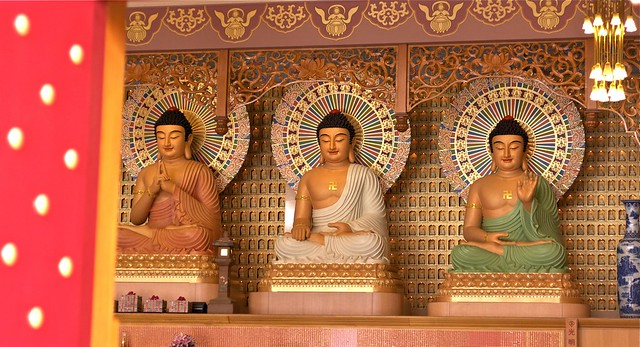

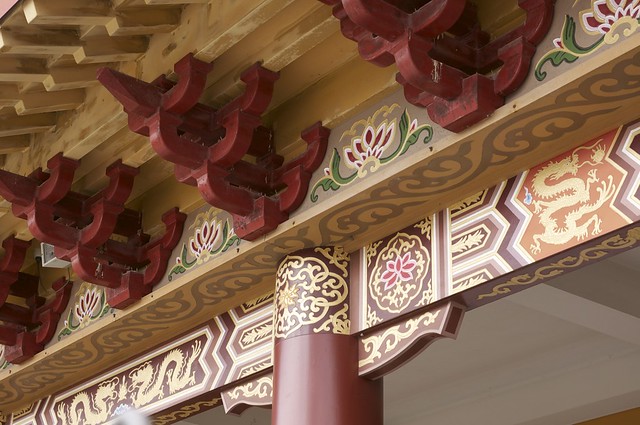
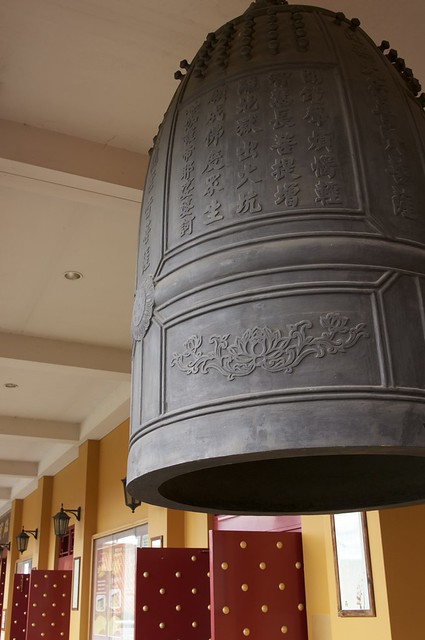
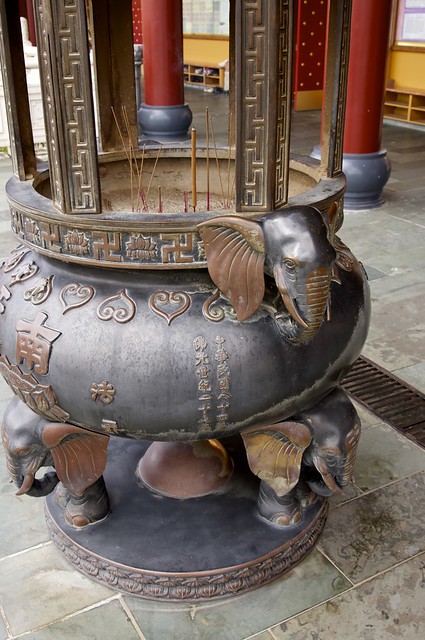
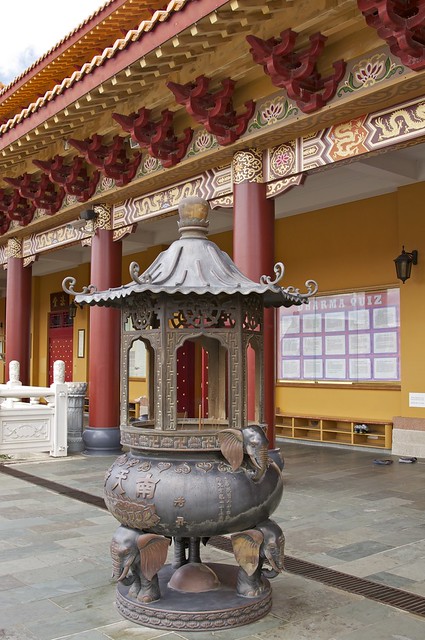
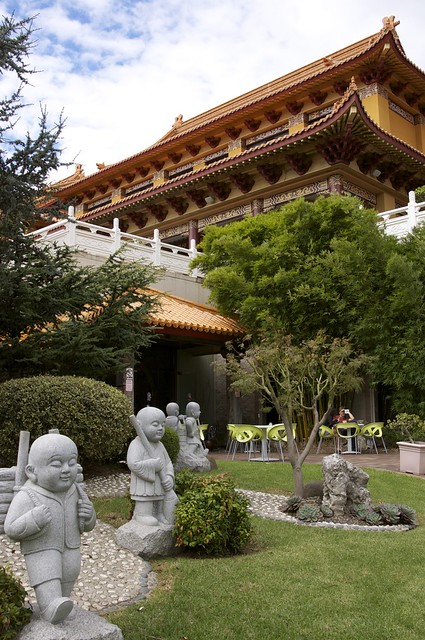

EXIF 1/200 sec, f/7.1, 24 mm, ISO 100, 2011:03:25 13:51:25, SLT-A55V
1. (1024 x 680) Nan Tien Temple
EXIF 1/80 sec, f/6.3, 24 mm, ISO 100, 2011:03:25 13:53:48, SLT-A55V
2. (1024 x 680) Nan Tien Temple
EXIF 1/125 sec, f/2.8, 50 mm, ISO 200, 2011:03:25 13:55:19, SLT-A55V
3. (1024 x 554) Nan Tien Temple
EXIF 1/800 sec, f/7.1, 24 mm, ISO 100, 2011:03:25 13:34:36, SLT-A55V
4. (1024 x 680) Nan Tien Temple
EXIF 1/160 sec, f/4.5, 45 mm, ISO 100, 2011:03:25 13:47:58, SLT-A55V
5. (1024 x 680) Nan Tien Temple
EXIF 1/40 sec, f/7.1, 24 mm, ISO 100, 2011:03:25 13:53:15, SLT-A55V
6. (680 x 1024) Nan Tien Temple
EXIF 1/80 sec, f/6.3, 24 mm, ISO 100, 2011:03:25 13:47:33, SLT-A55V
7. (680 x 1024) Nan Tien Temple
EXIF 1/80 sec, f/6.3, 24 mm, ISO 100, 2011:03:25 13:47:17, SLT-A55V
8. (680 x 1024) Nan Tien Temple
EXIF 1/160 sec, f/7.1, 24 mm, ISO 100, 2011:03:25 13:37:14, SLT-A55V
9. (680 x 1024) Nan Tien Temple
Tokina 11-16mm f/2.8 Wide Angle First Impressions
 Compared to the Zeiss 24-70 f/2.8, the wide angle Tokina is equally bright (faster considering its focal length) but does not have the same 'Zeiss warmth' and tends to look over-exposed in bright areas despite an in-camera -0.3EV adjustment and use of Polarising filter. The exaggerated angles of 11mm (i.e. 16.5mm focal length 35mm equivalent on the a55 APS-C sensor) present a surreal perspective view. While the colour and brightness/shadow balance seems natural and very good straight from the 24-70, this 11-16 seems to frequently require some restoration of the overblown light end of the spectrum. Reviewed against Sony's ultra wide angle, Ken Rockwell's review suggests the Tokina wins out in overall sharpness, especially towards the edges: "This Tokina 11-16mm lens sets a new standard for speed and sharpness in small-format digital SLR lenses. It's also the fastest ultrawide available for small format digital SLRs." Given the temple shots are all handheld on fairly open apertures, this is proving true. Although the lighting conditions were much more muted (dusk & shadow), the Sydney Red Gum (Angophora costata) shot below shows a stopped down aperture of f/22 and 3.2" exposure on a tripod, with consistent edge to edge sharpness. This degree of wide angle appeals to those who enjoy the dramatic warped perspective while the 24mm of the Zeiss (36mm equiv. on APS-C) presents perfectly natural perspective geometry and more intense saturation and warmer temperature and very realistic exposure without intervention.
Compared to the Zeiss 24-70 f/2.8, the wide angle Tokina is equally bright (faster considering its focal length) but does not have the same 'Zeiss warmth' and tends to look over-exposed in bright areas despite an in-camera -0.3EV adjustment and use of Polarising filter. The exaggerated angles of 11mm (i.e. 16.5mm focal length 35mm equivalent on the a55 APS-C sensor) present a surreal perspective view. While the colour and brightness/shadow balance seems natural and very good straight from the 24-70, this 11-16 seems to frequently require some restoration of the overblown light end of the spectrum. Reviewed against Sony's ultra wide angle, Ken Rockwell's review suggests the Tokina wins out in overall sharpness, especially towards the edges: "This Tokina 11-16mm lens sets a new standard for speed and sharpness in small-format digital SLR lenses. It's also the fastest ultrawide available for small format digital SLRs." Given the temple shots are all handheld on fairly open apertures, this is proving true. Although the lighting conditions were much more muted (dusk & shadow), the Sydney Red Gum (Angophora costata) shot below shows a stopped down aperture of f/22 and 3.2" exposure on a tripod, with consistent edge to edge sharpness. This degree of wide angle appeals to those who enjoy the dramatic warped perspective while the 24mm of the Zeiss (36mm equiv. on APS-C) presents perfectly natural perspective geometry and more intense saturation and warmer temperature and very realistic exposure without intervention.EXIF 1/100 sec, f/2.8, 11 mm, ISO 100, 2011:03:25 14:22:04, SLT-A55V
1. (680 x 1024) Nan Tien Temple
EXIF 1/50 sec, f/4.5, 11 mm, ISO 100, 2011:03:25 15:05:50, SLT-A55V
2. (1024 x 680) Nan Tien Temple
EXIF 1/40 sec, f/3.5, 11 mm, ISO 100, 2011:03:25 15:04:57, SLT-A55V
3. (1024 x 680) Nan Tien Temple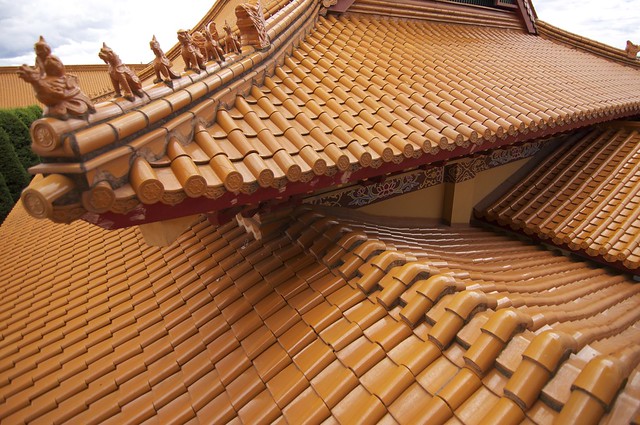
EXIF 1/160 sec, f/2.8, 12 mm, ISO 100, 2011:03:25 14:23:41, SLT-A55V
4. (1024 x 680) Nan Tien Temple
EXIF 1/40 sec, f/4.5, 11 mm, ISO 100, 2011:03:25 14:51:40, SLT-A55V
5. (1024 x 680) Nan Tien Temple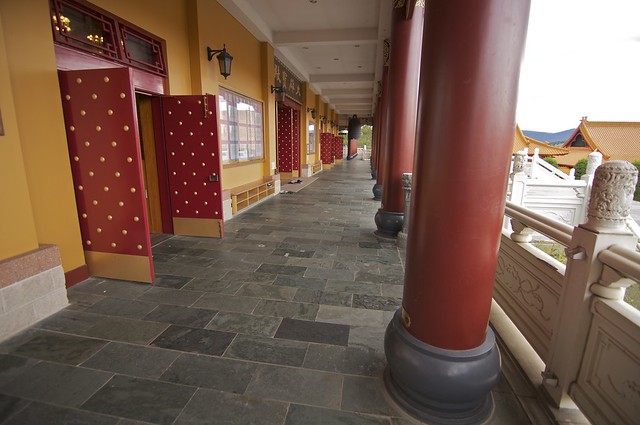
EXIF 1/80 sec, f/2.8, 11 mm, ISO 100, 2011:03:25 14:21:33, SLT-A55V
6. (1024 x 680) Nan Tien Temple
EXIF 3.2 sec, f/22, 13 mm, ISO 200, 2011:02:14 19:29:41, SLT-A55V
7. (1024 x 680) Sydney Red Gums (Angophora costata) at Balls Head Reserve
Sunday, March 20, 2011
Sony 70-200G First Impressions
This morning the Sony 70-200mm f/2.8 G lens arrived (105-300mm equiv. on APS-C). I feel like I haven't had much chance to familiarise myself with its quirks and foibles yet but here are some preliminary observations and test shots.
Technical: 34°-12° full frame, 23°-8° APS-C; p blades, circular aperture; min. focal length 910mm; filter size 77mm; physical length 198mm; weight 1598g.


Three 'hold' buttons can fix focus or other attributed functions. On the side the switches are to choose AF/MF, standard or full-time DMF (Direct Manual Focusing) and a focus limiter for 3m to infinty or the full range of the zoom.
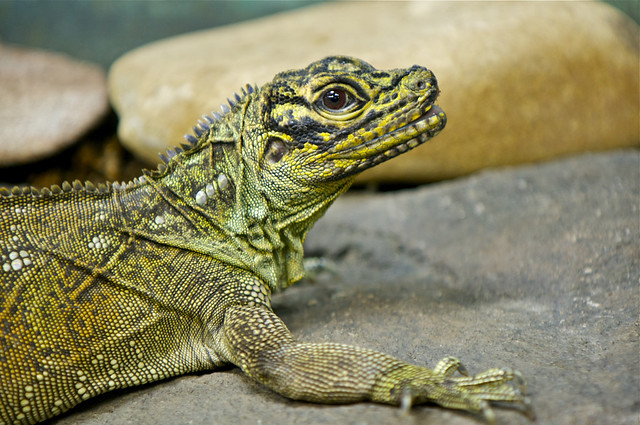


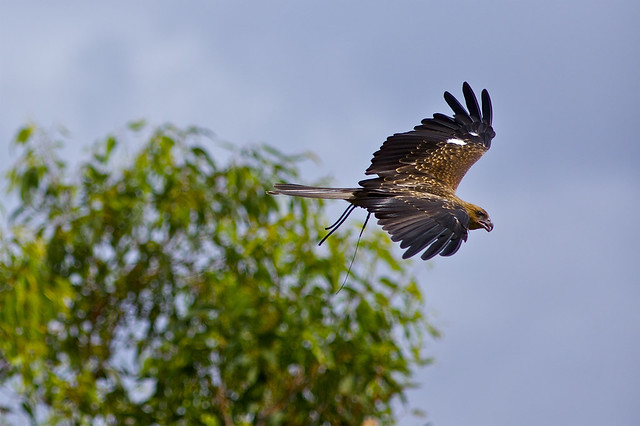

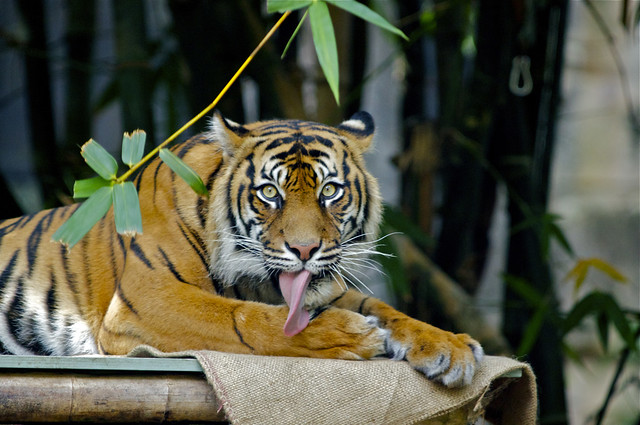

The weight does not seem so dramatic after the 135mm Zeiss which is all glass and metal. The 70-200 has plastic casing (presumably to save weight) while the lens body is made from metal, according to Photozone, "the build quality of the lens is exceptional" . It comes with a lens-hood of exaggerated proportions with a neat hatch that can be opened to access polarising filters. There are 3 focus-hold buttons on the lens itself and an optional tripod mount. The three buttons can be assigned to different tasks. I think I will designate one for AEL-hold, one for AF-hold. I took off with no filters, Kelvin adjustments or even the lens-hood and, given the crowded environment, no tripod. This was an ambitious test for the handheld capabilities of such a zoom lens. Tripod and cable release will prevail next time for a fairer comparison with the 135mm.
Naturally I compare the 70-220G against the Zeiss 135mm f/1.8 because it is my next longest lens, however the 70-200 might be prioritised for wildlife photos. First impressions reviewing on the LCD screen can be deceiving and I was worrying a lot that the sharpness was not matching that of the Zeiss that I am accustomed to. In part, this might be because the less bright and contrasty, less warm colour temperature provoked initial suspicion. I would not say I had a profound 'hit-rate' with keepers but I also changed my habits to try to track birds in flight, the Sumatran tiger pacing incessantly and never stationary, a slower lens than the f/1.8 135mm or f/1.4 85mm handheld and sometimes therefore resorting to a higher ISO or rapid-burst multi-exposures. It is difficult to track a subject's eye with the same precision using this method, leaving more discretion to the camera and chance. The first and striking feature is the incredible quietness and super speediness of the SSM focus motor. According to Photozone, "It is fast (although not as fast as in the Zeiss ZA 24-70mm f/2.8), near silent and very accurate". This only makes me more keen to spend time with my 24-70! There were occasional instances of focus 'hunting' in low light but never accompanied by intrusive lens noise and, for focusing in normal lighting conditions, it was almost instant: even the shutter noise seemed baffled by the large plastic lens. Altogether, these are very pleasing characteristics for nature photography. The zoom ring and focus ring are quite tight but perhaps that loosens with use. The lens does not change length with zooming, so there are no 'lens creep' issues. The front element does not rotate due to the internal focusing mechanism (WRT polarisers).
Convinced that the 70-200G might not be as precise as the Zeiss, I decided to perform some test shots at 135mm focal length. This is not a 'fair' test in the sense that the 135mm Zeiss is a fixed prime, but the 70-200G was therefore not at its extreme soft end of the zoom either. I compared same 'real-life' daylight conditions on P setting in late afternoon and both lenses opted for their widest aperture meaning, again, the exposures were not exactly the same: 2.8 and 1.8, respectively. In 50% of instances, the 70-200 was sharpest and in 50% the 135mm prime was sharpest, so I chalk that up as more or less equally sharp, (a bonus for the zoom) and variations in user operation or precision in focusing. The DOF was slightly different which is unsurprising given the 1-stop difference in aperture. The colour temperature was dramatically different: warmer on the Zeiss. This phenomenon is widely reported but also I had the B+W Kaeseman Circular Polarising (MRC Schott glass) filter on the Zeiss which further exaggerates the vivid reds. So, being able to explain away and control things like sharpness, DOF, and at least adjust for colour temperature, the lenses so far performed equally well. Photozone, testing from charts in controlled lab conditions, writes, "The Sony G produced very good to excellent resolution figures in the MTF lab. The performance is best at 70mm with a generally excellent quality across the image field".
70-220G f/2.8 1/320 200mm crop centre-weighted metering, AF & 135mm f/2 1/60 135mm centre-weighted metering, AF.
70-220G f/2.8 1/800 135mm centre-weighted metering, AF & 135mm f/2 1/50 135mm centre-weighted metering, AF.
70-220G f/2.8 1/250 135mm centre-weighted metering, AF & 135mm f/2 1/250 135mm centre-weighted metering, AF.
Very distinctive, however, was the different bokeh (blurred out-of-focus parts of the images). While the Zeiss has a renowned, smooth, silk bokeh without any signs of sharp-edged circles or bright highlights nor distinctive shapes, the 70-200G has a rather abrasive, strident bokeh, at times decidedly distracting. This is less of an issue if skylight or bright contrast behind the subject can be eliminated. The Whistling Kite example (the raptor pictured above) shows how strange this bokeh can look. These pictures of the tiger and kite were taken at high shutter speeds and high ISO so next time I will try stopping down or at least bringing the ISO back to earth but it was a very dim overcast day on this occasion (by Australian standards, anyway) and I was using a rapid-burst camera mode. Photozone writes, "Out-of-focus highlights are circular but show a fairly obvious outlining at f/2.8 and busy backgrounds are not handled overly well. The situation improves when stopping down". In contrast, Kurt Munger writes, "The Sony 70-200mm F/2.8 has excellent bokeh, and doesn't seem to vary from different focal lengths. Very pleasing even stopped down". I can only assume that 'very pleasing' means it is a bright fast lens and therefore is capable of producing bokeh in a range of situations, however, the 'pleasingness' I am comparing to the smoothest possible when speaking of the favourable bokeh of Zeiss lenses. This is good news! While I am not excited by the 70-200G bokeh, the most trusted Sony reviewer reports that it fares well: phew! Nonetheless, I will try stopping down more, light permitting. Looking at Munger's sample pictures, they are very different to mine with seriously decent bokeh at f/2.8. The sample picture here of a kind of rainbow pigeon (at least that's what it sounded like, I'm sorry I don't know bird species) is a picture in which the eye is tack-sharp and the colour rendition true, but the bokeh of the (admittedly difficult backlit) subject is unacceptably defined for my taste. It is the combination of brightness and sharp-edged circles in the background that bother me.
The picture of Red-Tailed Black Cockatoo (Calyptorhynchus banksii) [know these guys: they're Australian native birds!] is also shot in awkward conditions - 1/2000 ISO250 f/2.8. I would prefer a shallower DOF and smoother bokeh to really differentiate between the sharp subject and blurry background, whereas the background still has too much clarity in this shot (but they do fly fast - my excuse ...). Here's one of my all-time favourite bird photographers, Bence Mate, who hangs out in hides for months at a time to capture his ideal shots. For that patience (and great skill) he won the Wildlife Photographer of the Year Award 2010. I guess everybody has seen his picture of leaf-cutter ants in Costa Rica by now. He says he took thousands of pictures, from which this one was selected.
Compared with the 85mm Zeiss, any magenta fringing is far more difficult to detect (though not invisible) yet outclassed by the Zeiss 135mm which truly has next to no colour aberration. Kurt Munger writes, "Nice color rendition, reasonably sharp wide open and very sharp from f/4 down, instant auto-focus over-ride, very quiet and accurate focusing." As he points out, this is the sort of lens worth paying for if you undertake handheld wildlife photography. In my experience, wildlife photography can often be handheld for the simple reason that you need to quickly track an animal, a situation in which it's hard to keep up with a tripod. More time will tell ...
Technical: 34°-12° full frame, 23°-8° APS-C; p blades, circular aperture; min. focal length 910mm; filter size 77mm; physical length 198mm; weight 1598g.


Three 'hold' buttons can fix focus or other attributed functions. On the side the switches are to choose AF/MF, standard or full-time DMF (Direct Manual Focusing) and a focus limiter for 3m to infinty or the full range of the zoom.

EXIF 1/60 sec, f/2.8, 200 mm, ISO 500, 2011:03:18 16:16:15, SLT-A55V
1. (1024 x 680) Dragon
EXIF 1/320 sec, f/2.8, 200 mm, ISO 1600, 2011:03:18 15:52:29, SLT-A55V
2. (1024 x 680) Duck
EXIF 1/320 sec, f/2.8, 200 mm, ISO 800, 2011:03:18 16:09:29, SLT-A55V
3. (1024 x 680) Eastern Water Dragon
EXIF 1/3200 sec, f/3.2, 180 mm, ISO 100, 2011:03:18 15:02:42, SLT-A55V
4. (1024 x 682) Whistling Kite (raptor)
EXIF 1/1600 sec, f/2.8, 70 mm, ISO 1600, 2011:03:18 14:36:12, SLT-A55V
5. (1024 x 680) Sumatran Tiger
EXIF 1/800 sec, f/2.8, 200 mm, ISO 1600, 2011:03:18 14:38:35, SLT-A55V
6. (1024 x 680) Sumatran Tiger
EXIF 1/2000 sec, f/2.8, 200 mm, ISO 1600, 2011:03:18 14:33:58, SLT-A55V
7. (1024 x 680) Sumatran TigerThe weight does not seem so dramatic after the 135mm Zeiss which is all glass and metal. The 70-200 has plastic casing (presumably to save weight) while the lens body is made from metal, according to Photozone, "the build quality of the lens is exceptional" . It comes with a lens-hood of exaggerated proportions with a neat hatch that can be opened to access polarising filters. There are 3 focus-hold buttons on the lens itself and an optional tripod mount. The three buttons can be assigned to different tasks. I think I will designate one for AEL-hold, one for AF-hold. I took off with no filters, Kelvin adjustments or even the lens-hood and, given the crowded environment, no tripod. This was an ambitious test for the handheld capabilities of such a zoom lens. Tripod and cable release will prevail next time for a fairer comparison with the 135mm.
Naturally I compare the 70-220G against the Zeiss 135mm f/1.8 because it is my next longest lens, however the 70-200 might be prioritised for wildlife photos. First impressions reviewing on the LCD screen can be deceiving and I was worrying a lot that the sharpness was not matching that of the Zeiss that I am accustomed to. In part, this might be because the less bright and contrasty, less warm colour temperature provoked initial suspicion. I would not say I had a profound 'hit-rate' with keepers but I also changed my habits to try to track birds in flight, the Sumatran tiger pacing incessantly and never stationary, a slower lens than the f/1.8 135mm or f/1.4 85mm handheld and sometimes therefore resorting to a higher ISO or rapid-burst multi-exposures. It is difficult to track a subject's eye with the same precision using this method, leaving more discretion to the camera and chance. The first and striking feature is the incredible quietness and super speediness of the SSM focus motor. According to Photozone, "It is fast (although not as fast as in the Zeiss ZA 24-70mm f/2.8), near silent and very accurate". This only makes me more keen to spend time with my 24-70! There were occasional instances of focus 'hunting' in low light but never accompanied by intrusive lens noise and, for focusing in normal lighting conditions, it was almost instant: even the shutter noise seemed baffled by the large plastic lens. Altogether, these are very pleasing characteristics for nature photography. The zoom ring and focus ring are quite tight but perhaps that loosens with use. The lens does not change length with zooming, so there are no 'lens creep' issues. The front element does not rotate due to the internal focusing mechanism (WRT polarisers).
Convinced that the 70-200G might not be as precise as the Zeiss, I decided to perform some test shots at 135mm focal length. This is not a 'fair' test in the sense that the 135mm Zeiss is a fixed prime, but the 70-200G was therefore not at its extreme soft end of the zoom either. I compared same 'real-life' daylight conditions on P setting in late afternoon and both lenses opted for their widest aperture meaning, again, the exposures were not exactly the same: 2.8 and 1.8, respectively. In 50% of instances, the 70-200 was sharpest and in 50% the 135mm prime was sharpest, so I chalk that up as more or less equally sharp, (a bonus for the zoom) and variations in user operation or precision in focusing. The DOF was slightly different which is unsurprising given the 1-stop difference in aperture. The colour temperature was dramatically different: warmer on the Zeiss. This phenomenon is widely reported but also I had the B+W Kaeseman Circular Polarising (MRC Schott glass) filter on the Zeiss which further exaggerates the vivid reds. So, being able to explain away and control things like sharpness, DOF, and at least adjust for colour temperature, the lenses so far performed equally well. Photozone, testing from charts in controlled lab conditions, writes, "The Sony G produced very good to excellent resolution figures in the MTF lab. The performance is best at 70mm with a generally excellent quality across the image field".
70-220G f/2.8 1/320 200mm crop centre-weighted metering, AF & 135mm f/2 1/60 135mm centre-weighted metering, AF.
Seems 70-200G crop is sharper. Click for full-size image.
70-220G f/2.8 1/800 135mm centre-weighted metering, AF & 135mm f/2 1/50 135mm centre-weighted metering, AF.
Seems 135mm is sharper. Click for full-size image.
70-220G f/2.8 1/250 135mm centre-weighted metering, AF & 135mm f/2 1/250 135mm centre-weighted metering, AF.
Seems 70-200G is sharper. Note different bokeh in each image. Colour due to CP filter. Click for full-size image.
Very distinctive, however, was the different bokeh (blurred out-of-focus parts of the images). While the Zeiss has a renowned, smooth, silk bokeh without any signs of sharp-edged circles or bright highlights nor distinctive shapes, the 70-200G has a rather abrasive, strident bokeh, at times decidedly distracting. This is less of an issue if skylight or bright contrast behind the subject can be eliminated. The Whistling Kite example (the raptor pictured above) shows how strange this bokeh can look. These pictures of the tiger and kite were taken at high shutter speeds and high ISO so next time I will try stopping down or at least bringing the ISO back to earth but it was a very dim overcast day on this occasion (by Australian standards, anyway) and I was using a rapid-burst camera mode. Photozone writes, "Out-of-focus highlights are circular but show a fairly obvious outlining at f/2.8 and busy backgrounds are not handled overly well. The situation improves when stopping down". In contrast, Kurt Munger writes, "The Sony 70-200mm F/2.8 has excellent bokeh, and doesn't seem to vary from different focal lengths. Very pleasing even stopped down". I can only assume that 'very pleasing' means it is a bright fast lens and therefore is capable of producing bokeh in a range of situations, however, the 'pleasingness' I am comparing to the smoothest possible when speaking of the favourable bokeh of Zeiss lenses. This is good news! While I am not excited by the 70-200G bokeh, the most trusted Sony reviewer reports that it fares well: phew! Nonetheless, I will try stopping down more, light permitting. Looking at Munger's sample pictures, they are very different to mine with seriously decent bokeh at f/2.8. The sample picture here of a kind of rainbow pigeon (at least that's what it sounded like, I'm sorry I don't know bird species) is a picture in which the eye is tack-sharp and the colour rendition true, but the bokeh of the (admittedly difficult backlit) subject is unacceptably defined for my taste. It is the combination of brightness and sharp-edged circles in the background that bother me.
The picture of Red-Tailed Black Cockatoo (Calyptorhynchus banksii) [know these guys: they're Australian native birds!] is also shot in awkward conditions - 1/2000 ISO250 f/2.8. I would prefer a shallower DOF and smoother bokeh to really differentiate between the sharp subject and blurry background, whereas the background still has too much clarity in this shot (but they do fly fast - my excuse ...). Here's one of my all-time favourite bird photographers, Bence Mate, who hangs out in hides for months at a time to capture his ideal shots. For that patience (and great skill) he won the Wildlife Photographer of the Year Award 2010. I guess everybody has seen his picture of leaf-cutter ants in Costa Rica by now. He says he took thousands of pictures, from which this one was selected.
Compared with the 85mm Zeiss, any magenta fringing is far more difficult to detect (though not invisible) yet outclassed by the Zeiss 135mm which truly has next to no colour aberration. Kurt Munger writes, "Nice color rendition, reasonably sharp wide open and very sharp from f/4 down, instant auto-focus over-ride, very quiet and accurate focusing." As he points out, this is the sort of lens worth paying for if you undertake handheld wildlife photography. In my experience, wildlife photography can often be handheld for the simple reason that you need to quickly track an animal, a situation in which it's hard to keep up with a tripod. More time will tell ...
Saturday, March 19, 2011
Helpful iPhone Apps
 PhotosInfo allows you to view the EXIF, geo-tag location data and image dimensions (after iTunes' automatic size conversion from the original for iPhone) of a photo in the Photo app albums (including camera roll). Reviewing images in iPhone albums, this allows me to see which lens (by deduction from focal length: the lens ID is not displayed), aperture, ISO, shutter speed, etc. was used, at a glance. By clicking on the 'Details' tab, you can view the full information including location, editing software, colour space, etc. as you would usually find in the EXIF meta tags. I was looking for a way to access this information on the iPhone. Available in appstore.
PhotosInfo allows you to view the EXIF, geo-tag location data and image dimensions (after iTunes' automatic size conversion from the original for iPhone) of a photo in the Photo app albums (including camera roll). Reviewing images in iPhone albums, this allows me to see which lens (by deduction from focal length: the lens ID is not displayed), aperture, ISO, shutter speed, etc. was used, at a glance. By clicking on the 'Details' tab, you can view the full information including location, editing software, colour space, etc. as you would usually find in the EXIF meta tags. I was looking for a way to access this information on the iPhone. Available in appstore.PS Express is, as its name suggests, a miniature PS-style editor by Adobe for images on the iPhone or iPad. Combined with a RAW format importer (such as PhotoRAW) and the camera kit on the iPad, you can import an original image from the camera and make a rough edit, or perform simple adjustments to contrast, sharpness, saturation, cropping in an 'emergency', e.g. with a view to MMS-ing or emailing off immediately in the field, though I would never trust the iPhone/iPad display calibration for serious work! It's also rather handy for fixing the images straight from the iPhone camera. It utilises the touch gestures of the IOS by controlling the application of whichever tool is active by panning the finger left/right across the whole screen. This is effective for achieving greater control than a microscopic finger-operated slider permits. Available in appstore.
Thursday, March 17, 2011
Sony Zeiss 135mm f/1.8 prime
This is probably my favourite lens because it is fast, has a 203mm equiv. reach on APS-C format sensor and shows no visible chromatic aberration (CA), while other fast Zeiss primes can have issues with magenta fringing in high contrast situations, wide open. The focus is very sharp and with f/1.8 aperture enables a great deal of creative freedom with depth of field (DOF). As you can see, many of my animal photos are portrait-style, tight composition, sharp eyes and shallow DOF. My ongoing project is trying to catch wildlife in more idomatic and exciting poses.

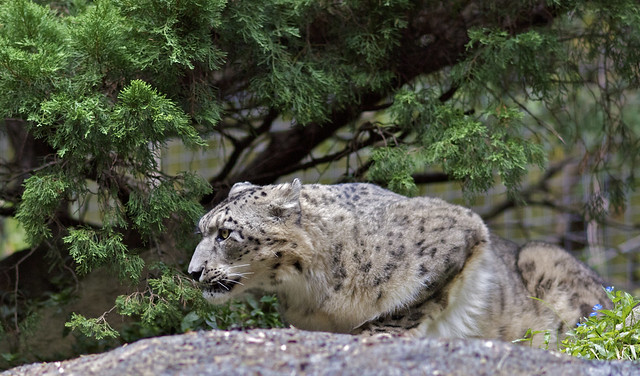

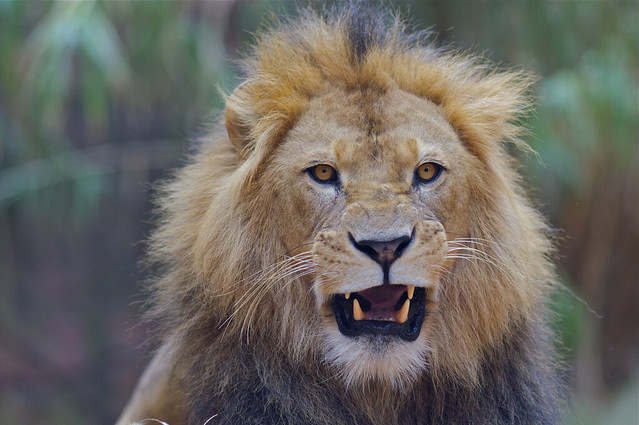
This nice fellow just stared straight at the camera, bearing those teeth.
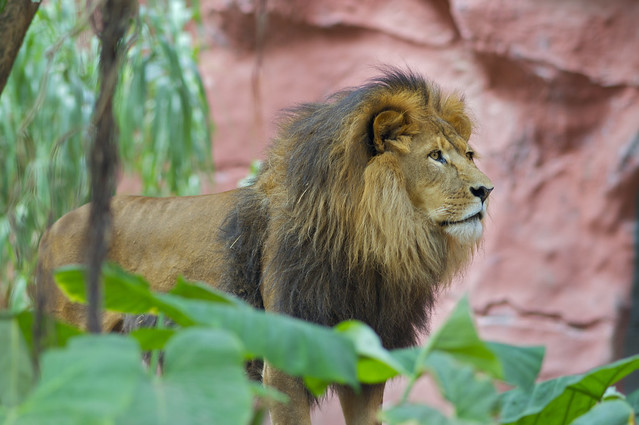


EXIF 1/320 sec, f/2, 135 mm, ISO 1600, 2011:03:06 14:37:23, SLT-A55V
1. (1024 x 681) Sumatran Tiger
EXIF 1/2000 sec, f/2, 135 mm, ISO 1250, 2011:03:06 14:41:25, SLT-A55V
2. (1024 x 602) Snow Leopard (endangered species)
EXIF 1/60 sec, f/2, 135 mm, ISO 400, 2011:03:06 14:58:34, SLT-A55V
3. (1024 x 658) Treefrog
EXIF 1/2000 sec, f/2, 135 mm, ISO 1000, 2011:03:06 14:25:49, SLT-A55V
4. (1024 x 681) LionThis nice fellow just stared straight at the camera, bearing those teeth.

EXIF 1/60 sec, f/2, 135 mm, ISO 100, 2011:03:06 14:22:24, SLT-A55V
5. (1024 x 681) Lion
EXIF 1/200 sec, f/2, 135 mm, ISO 100, 2011:03:06 14:23:32, SLT-A55V
6. (1024 x 681) Lion
Zeiss 85 f/1.4 & 135 f/1.8 animal portraits
The Zeiss 85mm is marketed by Sony principally as portrait prime. I actually find it allows more intimate animal shots and a broad range of subjects with impeccable speed and sharpness. My only (and fairly substantial) reservation is around the magenta fringe CA that occurs in high contrast and difficult light situations at all apertures. Some lenses can reduce CA by stopping down but this doesn't seem to be the case with this otherwise delicious prime. (This makes nocturnal bulb explosures also unacceptable with this lens IMO). The colour rendition is especially pleasing. Focus is fast and quiet. It is also relatively portable and compact in dimensions for a carry-around lens while remaining solidly built from metal. You can see the detail resolution and sharpness in the green iguana photo below.
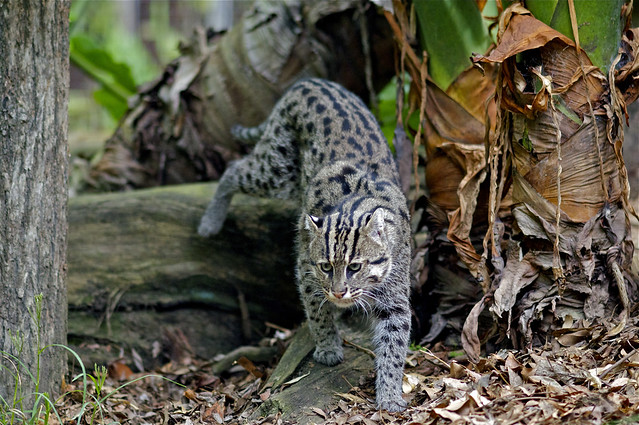
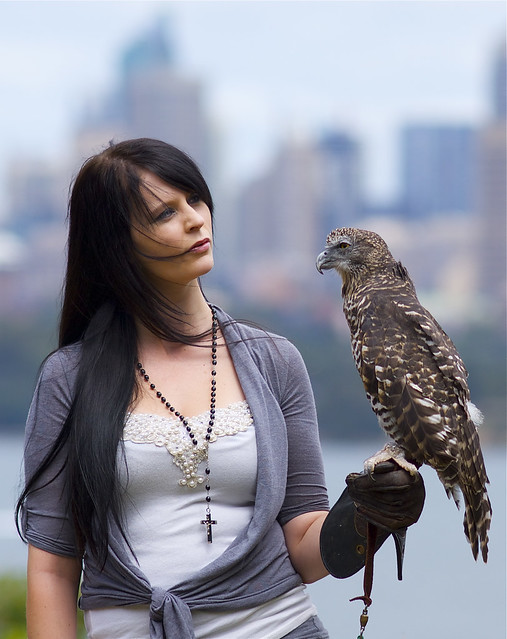
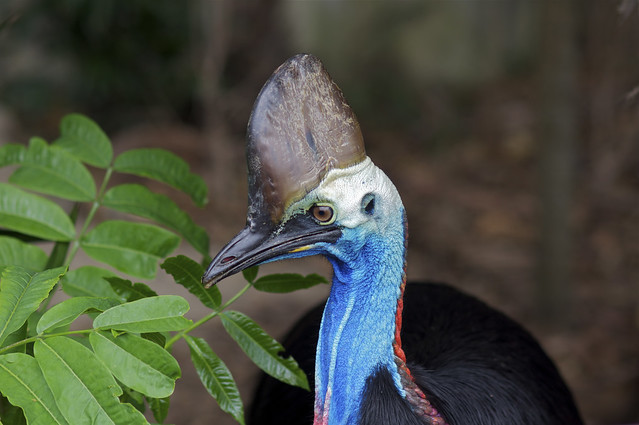
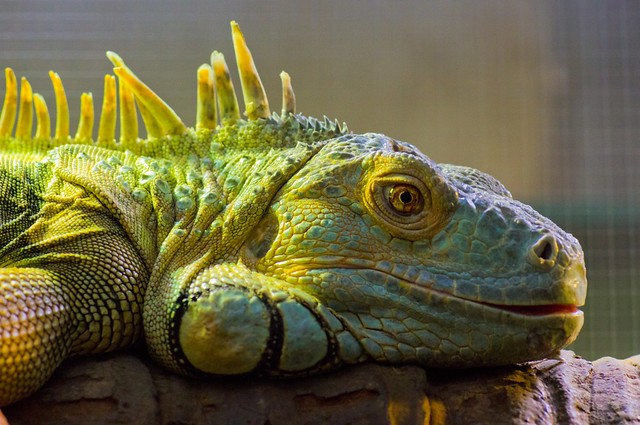
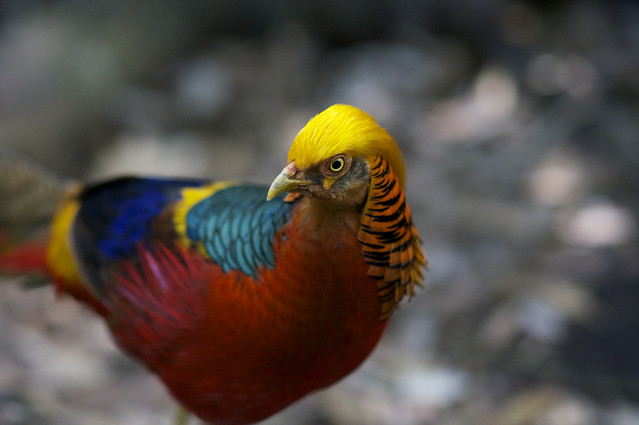
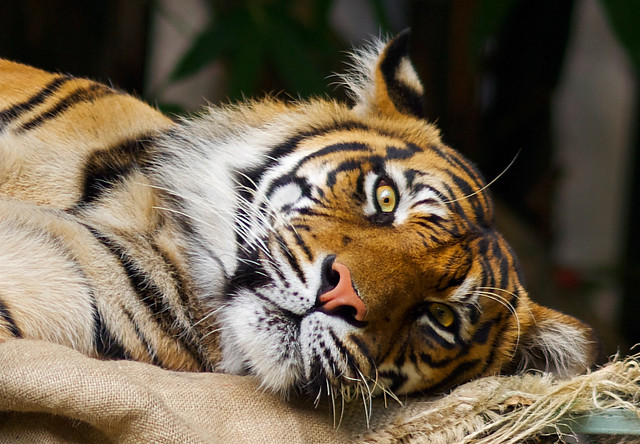

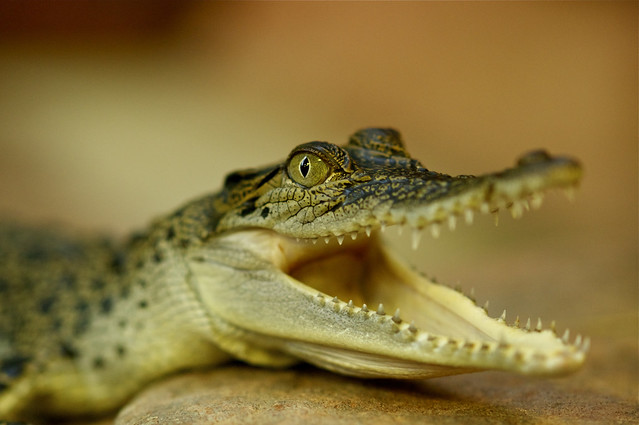
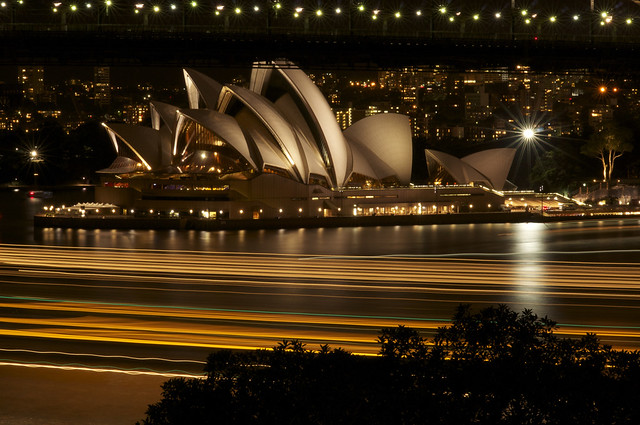

EXIF 1/320 sec, f/2, 135 mm, ISO 1600, 2011:03:06 13:50:53, SLT-A55V
1. (1024 x 681) Fishing Cat (from Indonesia)
EXIF 1/500 sec, f/3.2, 135 mm, ISO 100, 2011:03:06 12:33:02, SLT-A55V
2. (812 x 1024) Owl
EXIF 1/250 sec, f/2.5, 85 mm, ISO 100, 2011:02:27 16:07:34, SLT-A55V
3. (1024 x 681) Cassowary
EXIF 1/60 sec, f/5.6, 85 mm, ISO 1600, 2011:02:25 16:37:55, SLT-A55V
4. (1024 x 680) Iguana
EXIF 1/200 sec, f/2, 135 mm, ISO 1600, 2011:03:06 13:28:16, SLT-A55V
5. (1024 x 681) Tropical Bird
EXIF 1/250 sec, f/2, 135 mm, ISO 100, 2011:02:08 16:32:48, SLT-A55V
6. (1024 x 710) Taronga Zoo Sydney
EXIF 1/2000 sec, f/2, 135 mm, ISO 1000, 2011:02:11 16:14:20, SLT-A55V
7. (1024 x 680) Lion Queen
EXIF 1/250 sec, f/2, 135 mm, ISO 640, 2011:02:08 15:56:48, SLT-A55V
8. (1024 x 681) Taronga Zoo Sydney
EXIF 78 sec, f/22, 135 mm, ISO 100, 2011:02:07 21:42:22, SLT-A55V
9. (1024 x 680) Boat trails
Subscribe to:
Posts (Atom)










